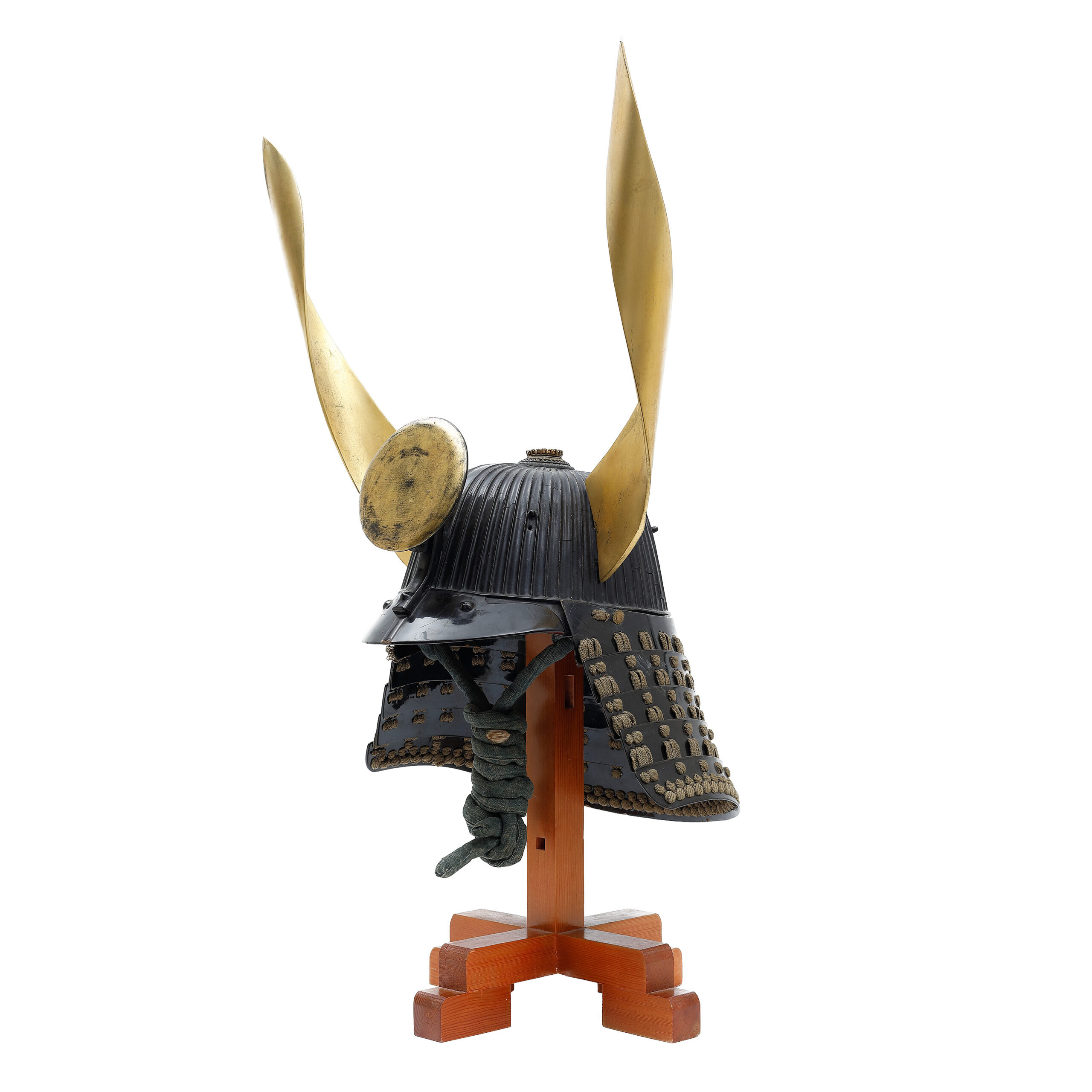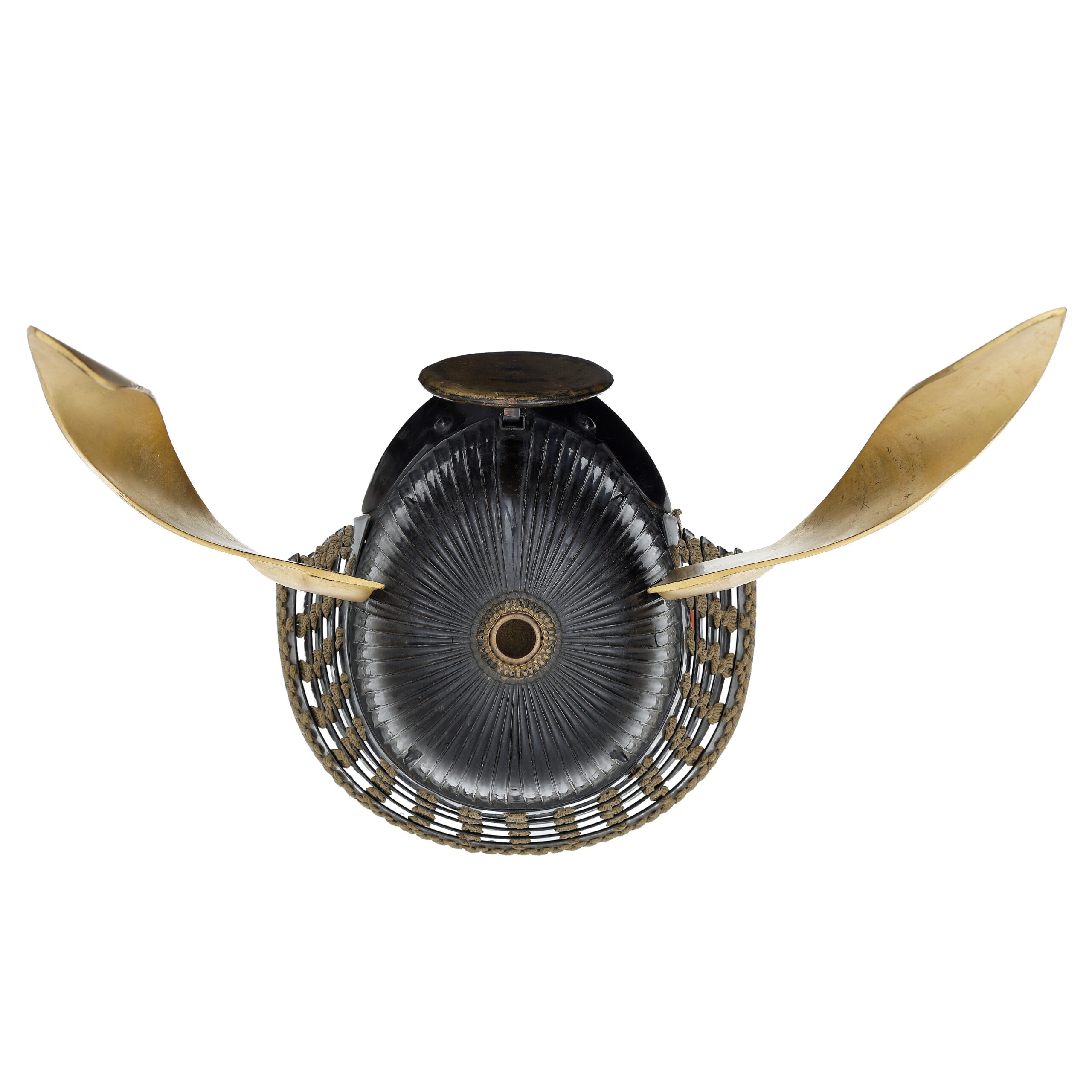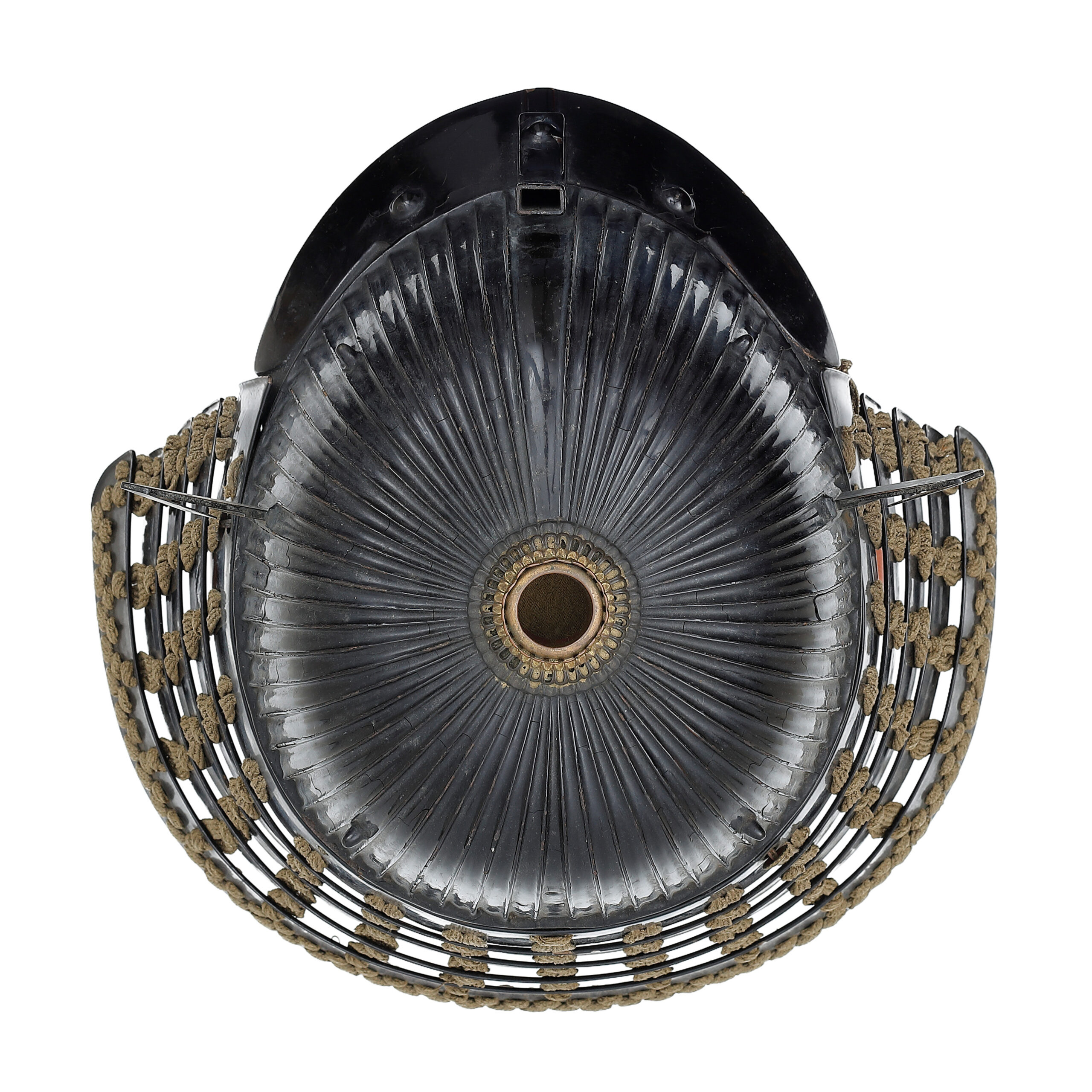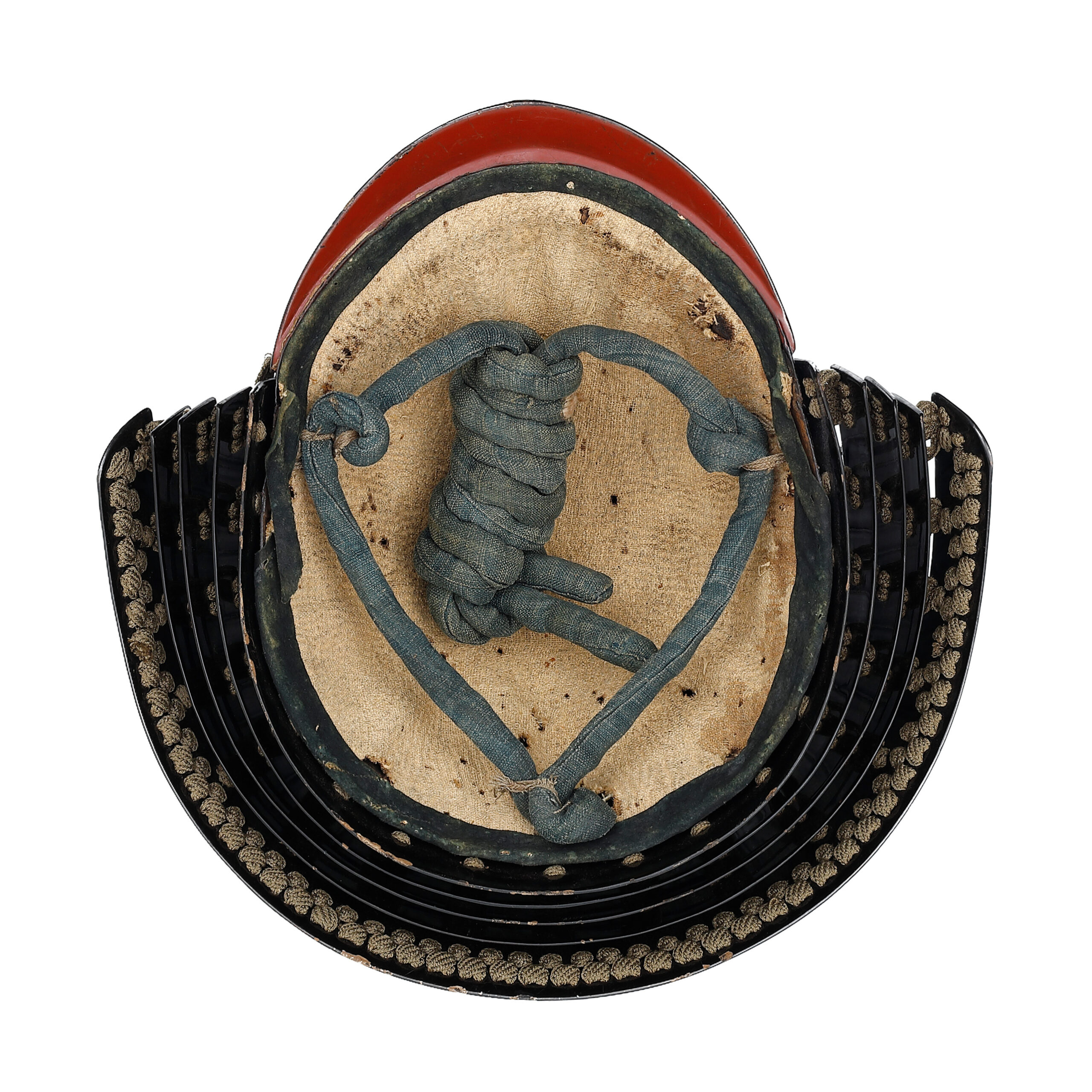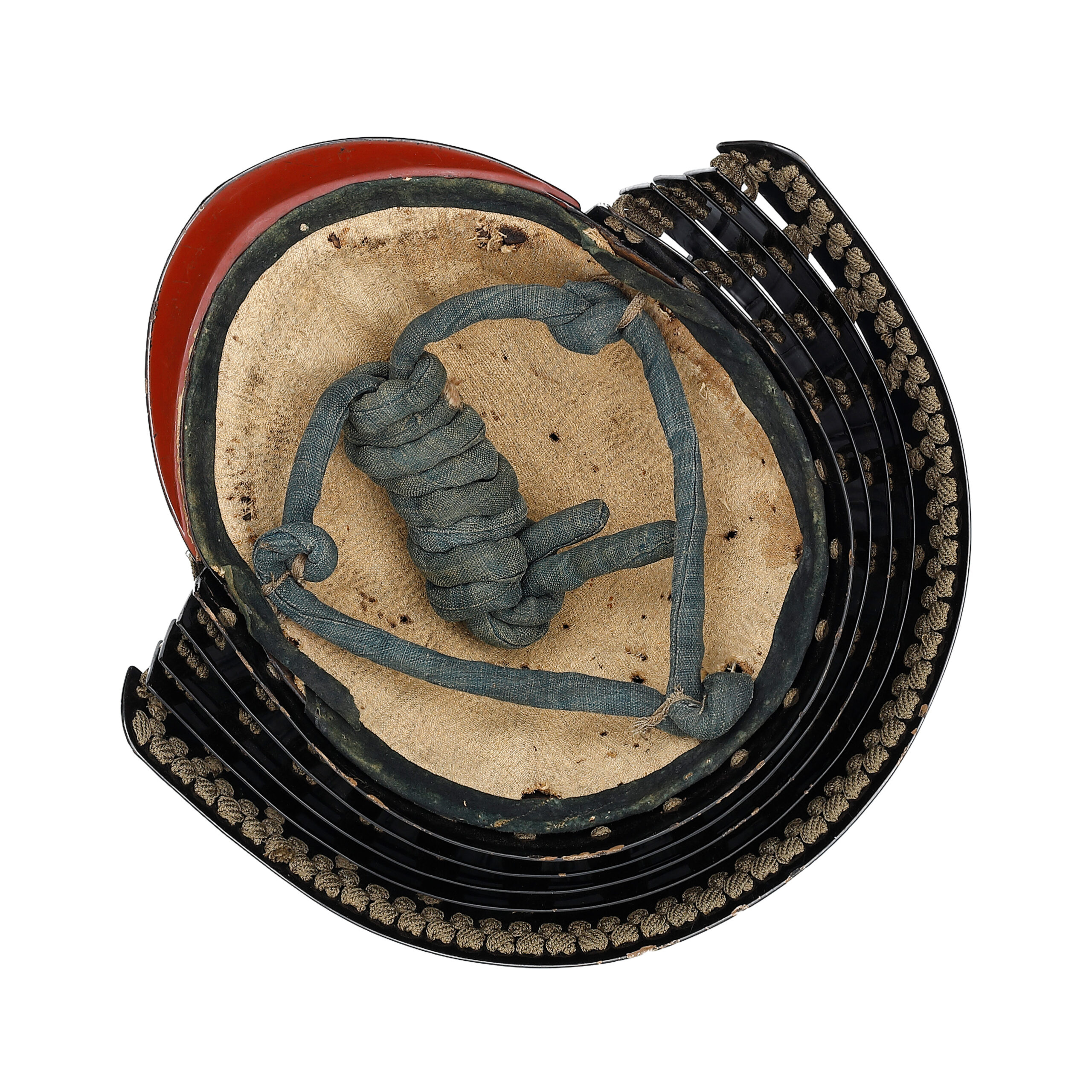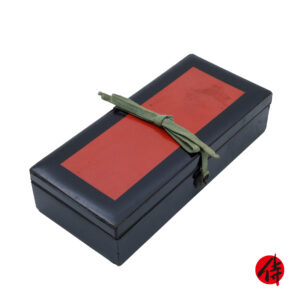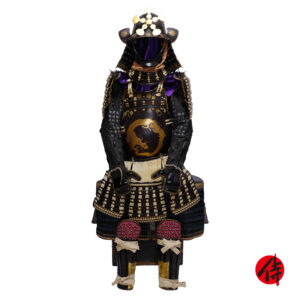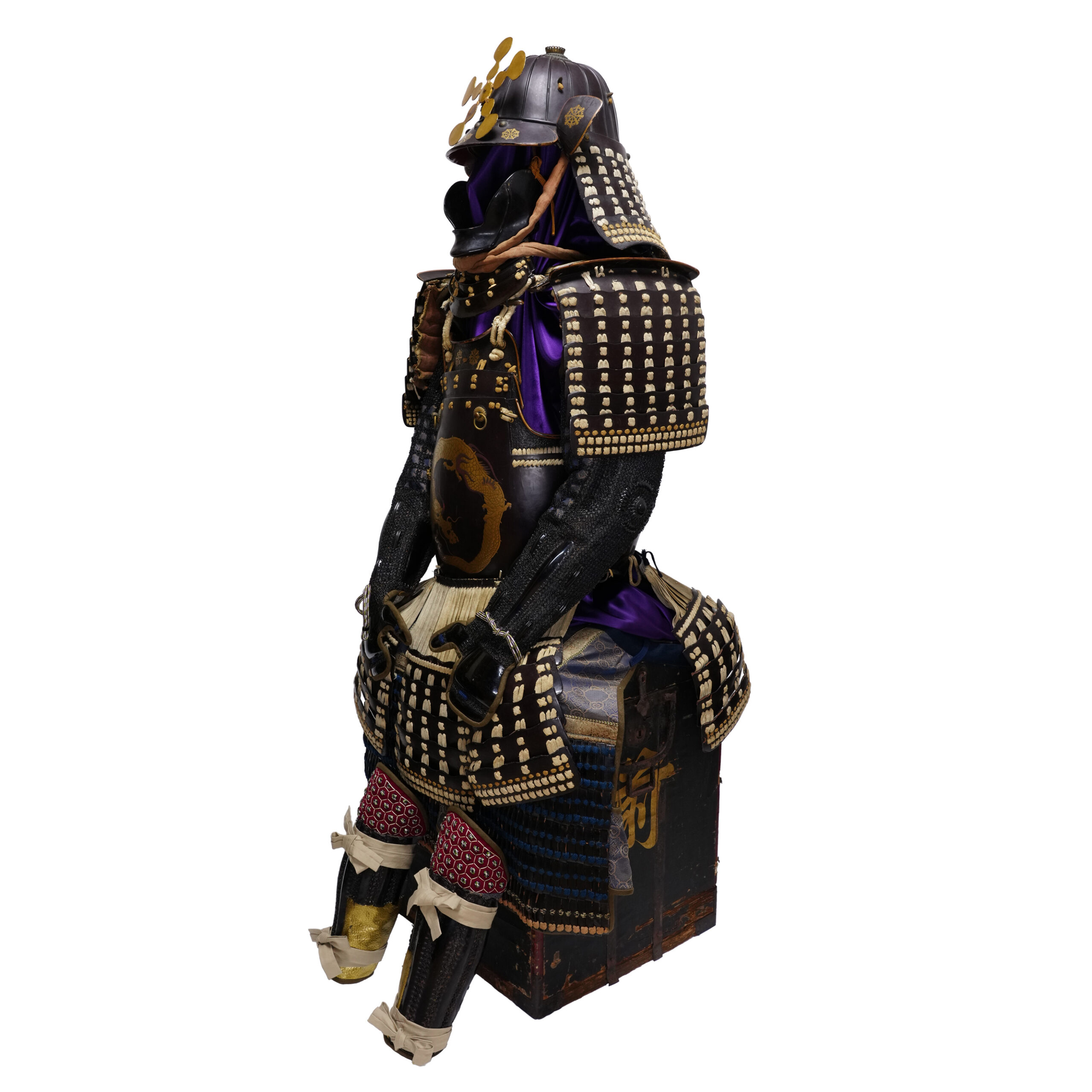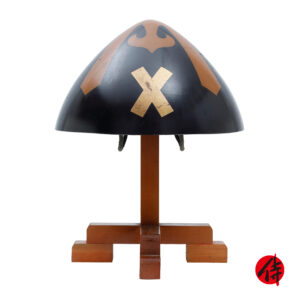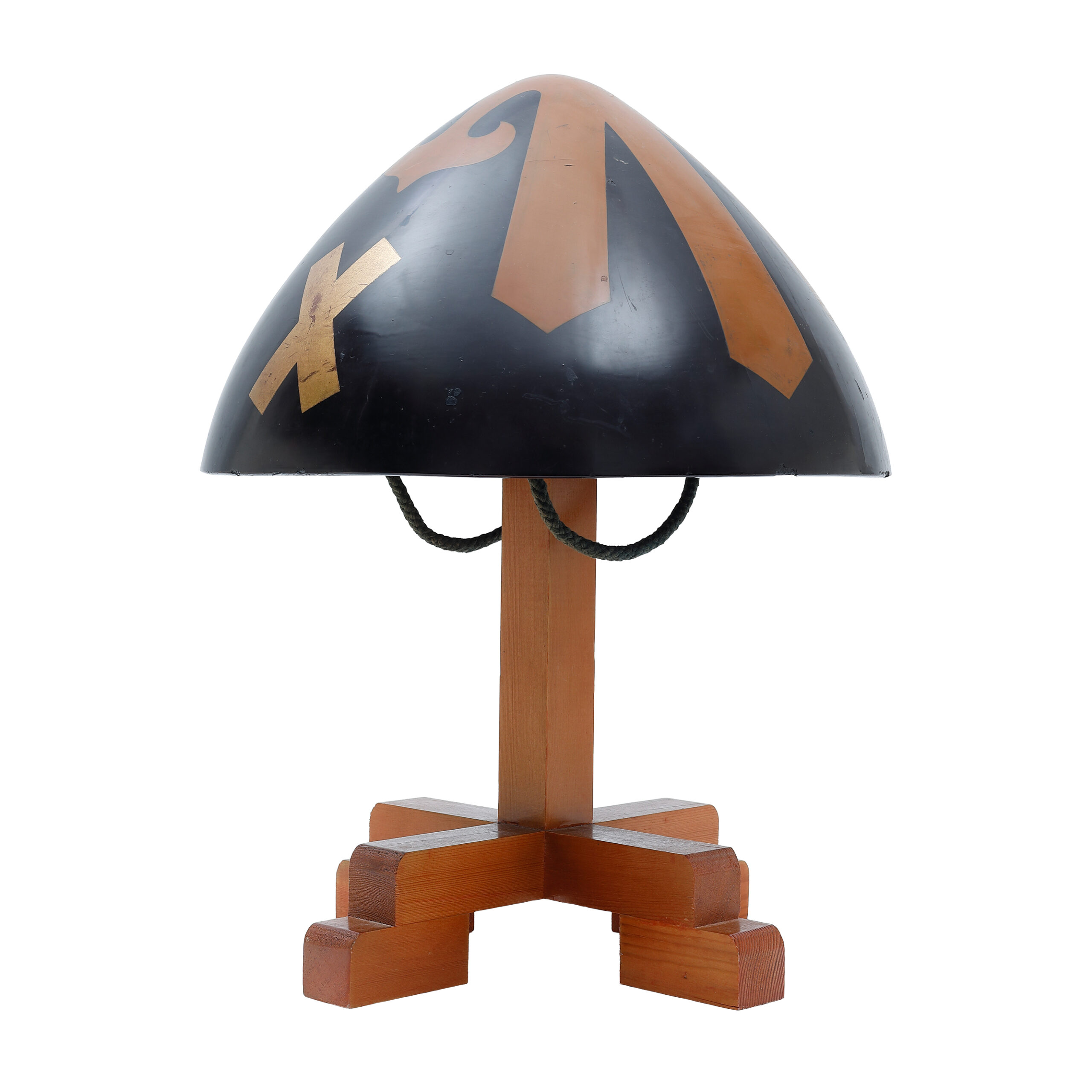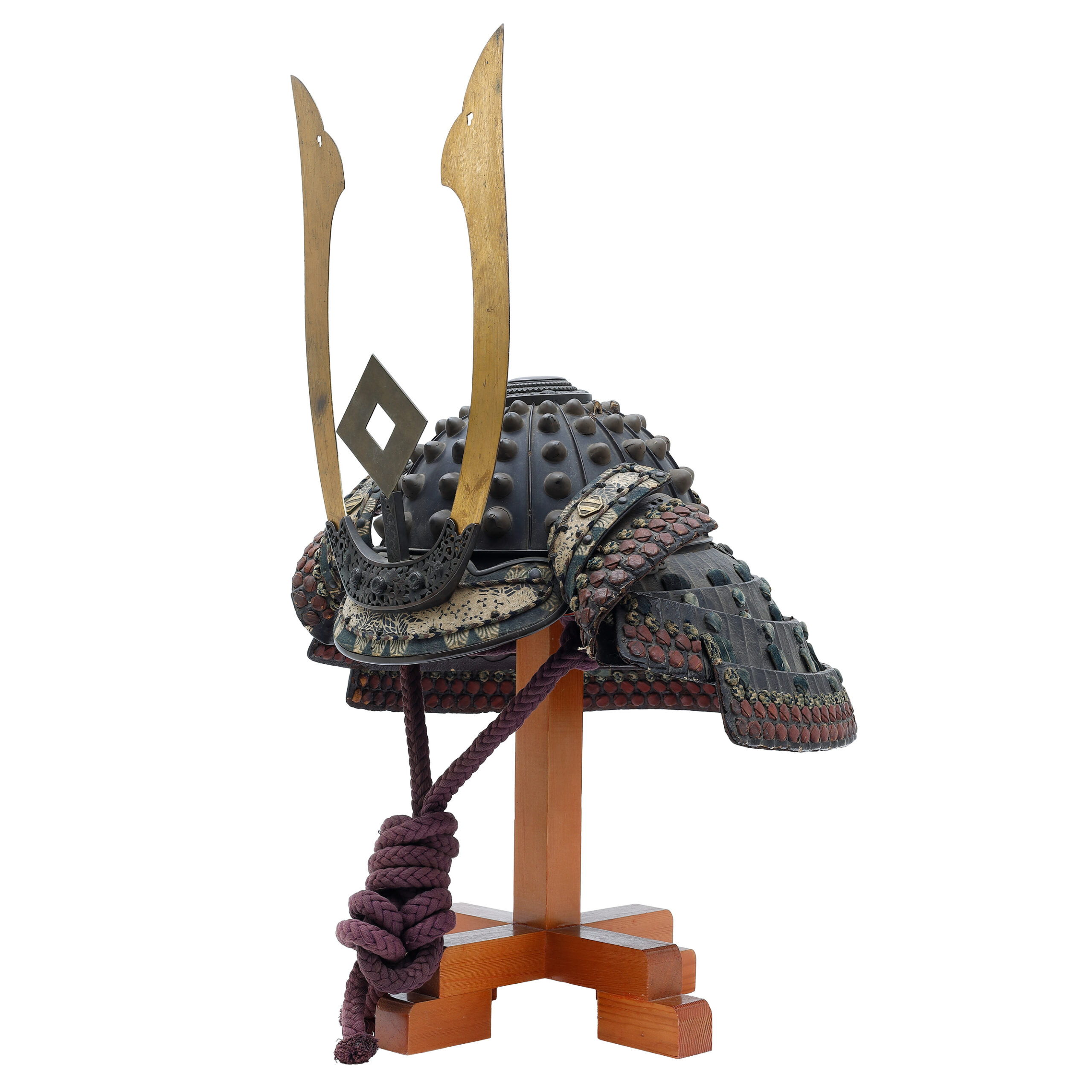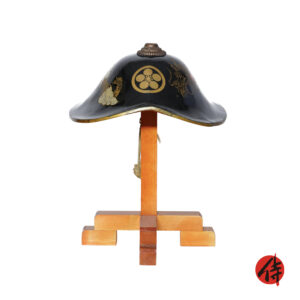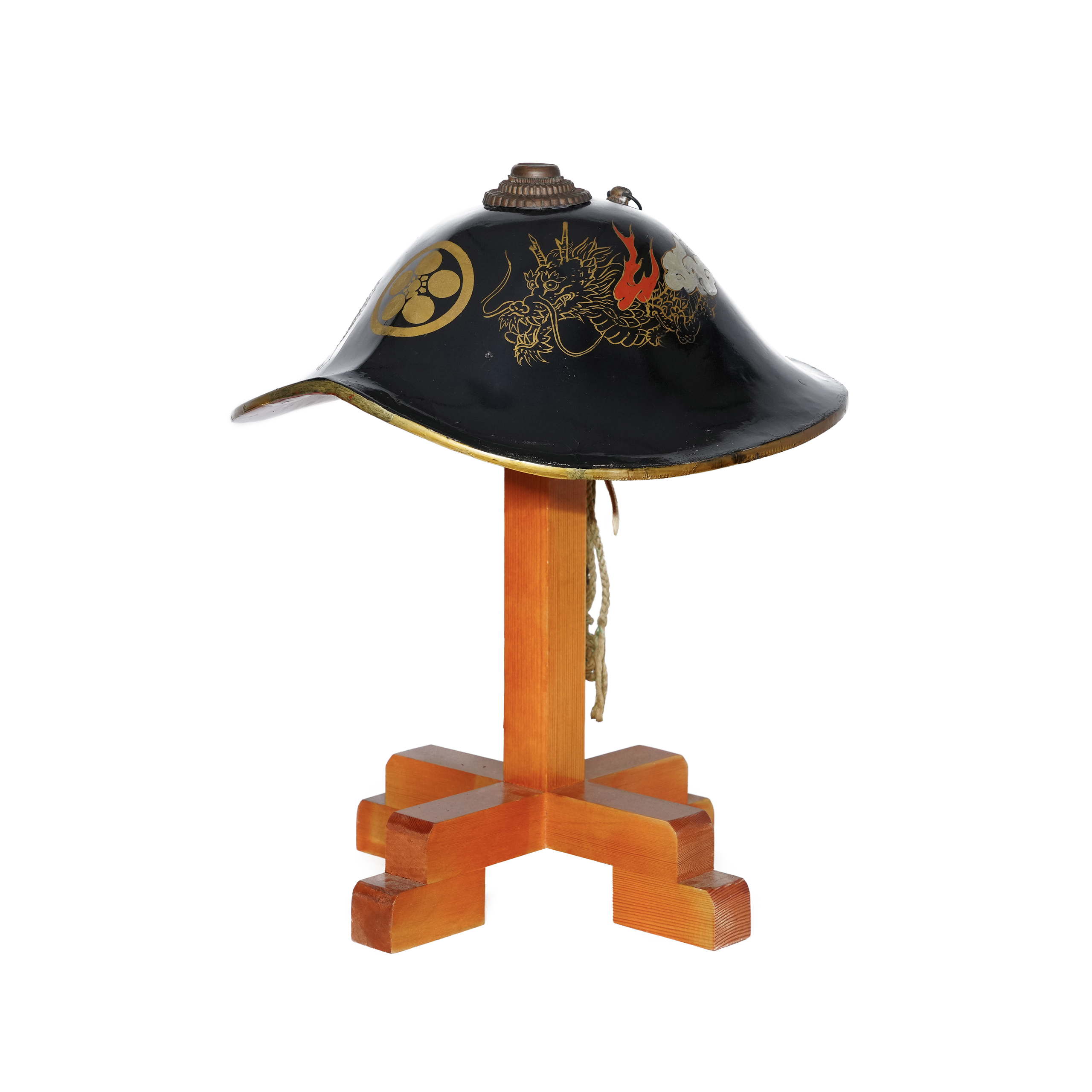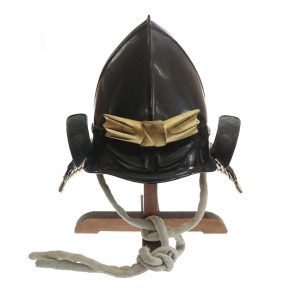Antique Samurai Helmet Rokujuni Ken Suji Kabuto with Tokubetsu Kicho Shiryo Certificate (KT-33)

Period: Early Edo Period (appraised by The Association for the Research and Preservation of Japanese Helmets and Armor)
Prime Material: Iron
Suji Kabuto (筋兜) consists of many small riveted iron plates to form its shape. This helmet has Rokujuni (sixty two in Japanese) iron plates. Suji means a stripe in Japanese, and you can see 62 stripes in this helmet.
The Kabuto (兜, helmet) is a protector for the head. When people started using the Kabuto, it was initially designed for practical use. However, the principal purpose of its design has changed with time; Samurais tried to express their dignity, personality, or religion by wearing the characteristic design Kabutos. According to a theory, these unique designed Kabutos were made from the late Muromachi period to the Edo period. This type of Kabuto is categorized as the Kawari Kabuto (変わり兜), and a variety of materials were used to create them. For example, animal fur, seashells, plants, and papers were used as materials for decoration.
Before the Kawari Kabuto’s production, the Suji Kabuto (筋兜) has appeared during the Nanbokuchou (南北朝, 1337-1392) period. At that time, the tactic was gradually changed from the piggyback fight style to battle with the Tachi (太刀) sword and the Naginata (薙刀, Japanese halberd) on the ground. Therefore, there was a rise in demand for the weight saving of the Kabuto. Also, in order to turn the attack by swords, a new type of structure was invented; it is the Suji Kabuto (筋兜). Its form slides swords’ attacks when weapons hit the Kabuto. It is said that the production of the Suji Kabuto prospered in the Muromachi (室町, 1336-1573) period. The Suji Kabuto production continued in the Edo period also; however, iron plates that Kabuto makers used at that time were thicker than the Muromachi period’s Suji Kabuto. Therefore, it was heavier, and we understand that then people cherished the Suji Kabuto to enjoy the old-style Kabuto, not to wear it on the battlefields.


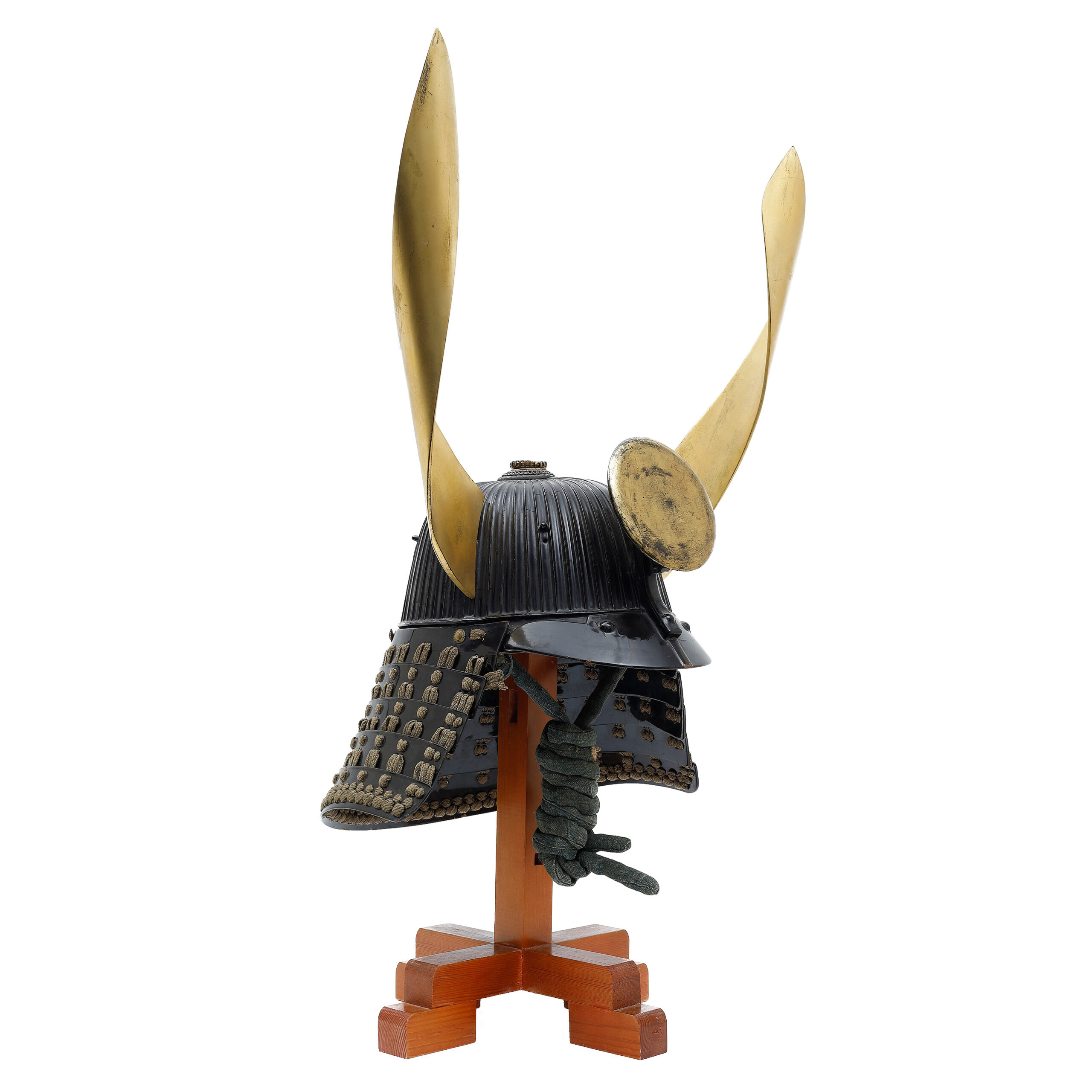

This Kabuto’s Maedatemono (前立物, front decoration) has a golden circle motif. We estimate the sun or the full moon is its model. There was a widespread belief among Samurai, the Myouken (妙見) belief. This religion was born in India. It was mixed with the Polestar belief and was brought to Japan from the continent. The sun, the moon, and the stars of the universe were the symbols of faith. The Myouken Bosatsu (妙見菩薩, 菩薩 means Bodhisattva) fulfills all wishes such as fertility of rich harvest, peace, the prosperity of the clan, healing of illness, longevity, success in business, traffic safety, academic achievement, marriage, etcetera. So, it is understandable that many Samurai cherished sun and moon motifs. The former owner of this armor might have shown his faith by wearing this Kabuto.
Also, the Wakidate (脇立, side decoration) is attached to this Kabuto. These are kinds of Tatemono (立物); it is a general term for items that decorate a Kabuto and show off the wearer’s dignity and exaggerate their presence. The designs included standing objects with motifs of animals, plants, and vessels and Tatemonos rooted in religious beliefs, such as the sun and moon. They were made of various materials, including iron, copper, gold, silver, brass, wood, bamboo, animal horns, tusks, and leather. This decoration is classified as follows depending on where it is attached on a Kabuto: Maedate, Zudate (頭立, ornament attached to the top of the head), Wakidate, and Ushirodate (後立, back decoration). The Wakidate of this Kabuto might be a variation of the Kuwagata (鍬形), which is often used as a kind of Maedatemono to dignify the appearance. This Kuwagata is slightly curved, which is unique and unusual. This Wakidate can be detached and attached to the iron plates aside the Kabuto.

Certification: Tokubetsu Kicho Shiryo Certificate
The certificate was issued by The Association for the Research and Preservation of Japanese Helmets and Armor, which is the most trusted Japanese armor appraiser in Japan. Tokubetsu Kicho Shiryo means special rare article. It is ranked as the third highest of five rankings.
This helmet was authenticated on October 10th, 2021, as a Tokubetsu Kicho Shiryo, and this paper mentions that this item was made in the early Edo period.
An English translation of the certificate is available on request. We won’t charge any additional fee.

【About us】
Samurai Museum is located in Tokyo, Japan, exhibiting antique artifacts related to the Samurai history. Samurai Museum Shop is the place for those who are interested in Japanese culture and craftsmanship. We deal with antique Samurai swords/armor, traditional crafts made in Japan and so on.
【Antique Japanese helmet (Kabuto) and Export process】
After receiving the full payment from you, we will apply for its export permit from the Board of Education to legally export the helmet to other countries. It normally takes around 2-4 weeks to receive this permit. And we would like you to expect at least 1.0-1.5 months for your order to arrive at your given address after you ordered.
【Payment Method】
We accept payment through Stripe (Credit card), PayPal, Apple Pay or ChromePay, all of which are secure payment methods. Also, you don’t need to make an account on Stripe for the checkout. If you prefer other payment method, please contact us. After confirming your payment, we will apply for an export permit. You may either pay in JPY, USD, AUD, CAD, EUR, CHF or GBP. The price is set in Japanese Yen. Prices in other currencies are automatically calculated based on the latest exchange rate.

* If the amount is above 1 million JPY, Stripe or wire transfer will be the only options for payment.
【Shipping Duration】
We normally ship via EMS (Express Mail Service) provided by Japan Post. It usually takes at least 5-14 days to deliver the package after you place an order.
We offer Free International Shipping as long as we can ship your order by EMS. If you prefer other shipping carriers, please contact us.
We will inform you of the order’s tracking number via email. Please make sure you fill out your valid email address correctly.
*If you like to make sure if EMS shipping is available to your country, please contact us.

【How to make sure the condition】
Please keep in mind that what you are going to purchase is an antique item. We uploaded high resolution photos for you to check its condition thoroughly. If you like to see more photos with different angles, please feel free to contact us. We will be happy to send them to you so that you can make informed decision. It is essential for us to know that you are happy with your choice of a sword. and we are prepared to use the best of our ability to serve you.
【How To Contact Us】
Please contact us through email, Facebook Messenger or Live Chat if you have any questions. You can find each icon on the right side of the website. Please click one of them to reach us. We will reply to you within 1-2 business days.
【How To Preserve Antique Samurai Armor/Helmets】
Dryness, humidity, and bad ventilation might deteriorate the condition of antique Samurai armor/helmet. The best temperature to preserve Samurai armor/helmet is around 20℃ in Celsius, and humidity should be about 60%. Direct sunlight should be avoided. We recommend storing armors/helmets in a room with good ventilation. If you like to display them outside the boxes for a prolonged time, we suggest using a glass case in order for dust not to be accumulated easily. In case you don’t use a glass case, please make sure to regularly dust off from the armor/helmets by using a soft brush made of delicate cloth or brush for painting.
If you like to know more about the preservation of this armor, please feel free to contact us.

